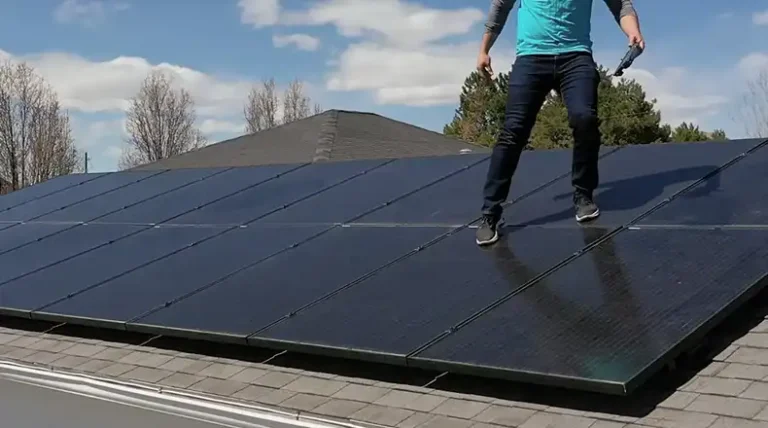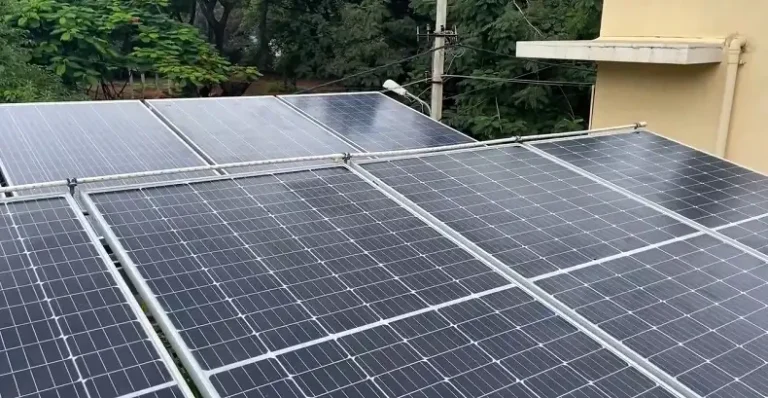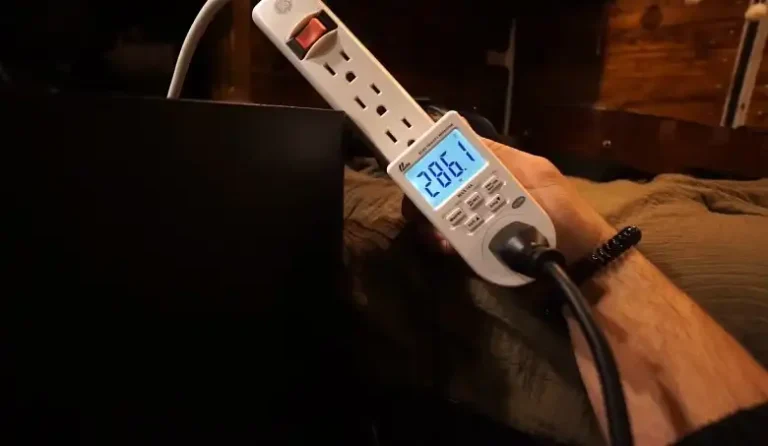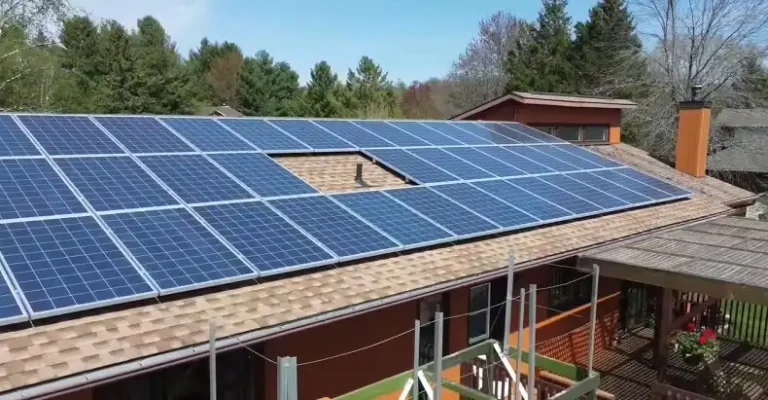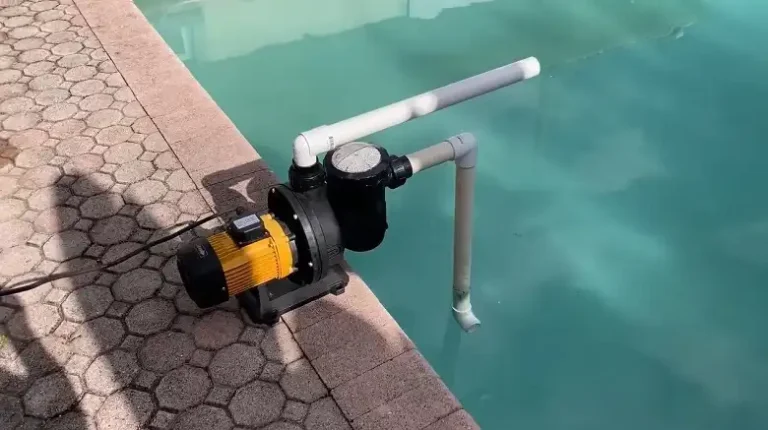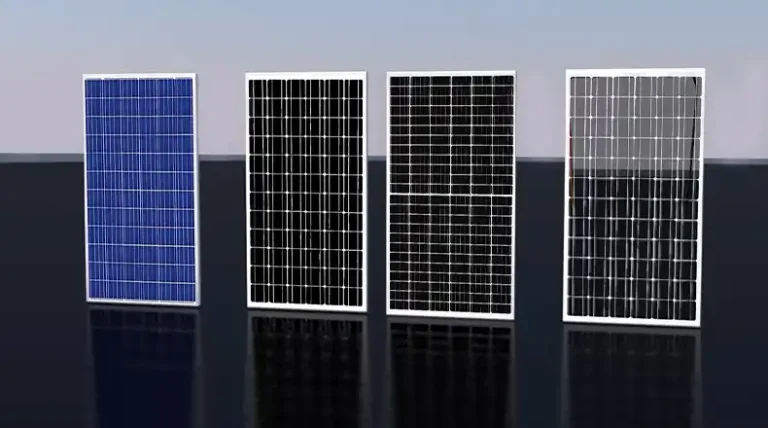Do You Need Optimizers On Every Solar Panel?
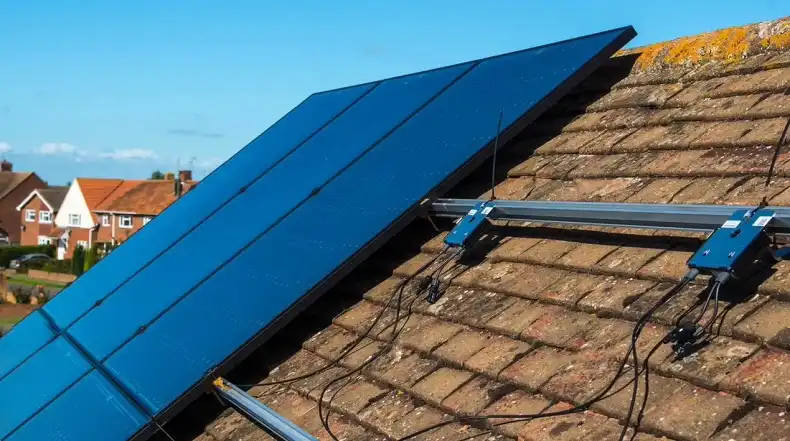
Solar panel optimizers have become a hot topic in the world of residential solar installations.
But do you really need optimizers on every solar panel in your system? This question has sparked debate among solar enthusiasts and industry professionals alike.
Solar panel optimizers are devices that help maximize the efficiency of individual panels by optimizing their output, particularly in situations where shading or other factors might impact performance.
However, their necessity depends on various factors specific to your solar setup. In this article, we’ll explore the pros and cons of solar panel optimizers, when they’re most beneficial, and whether the additional cost is justified for your particular situation.
By the end, you’ll have a clearer understanding of whether optimizers are a smart investment for your solar energy system or if alternative solutions might be more suitable.
Now, let’s dive into the details of solar panel optimizers and help you make an informed decision for your solar installation.
What Are Solar Panel Optimizers?
Solar panel optimizers are clever devices designed to enhance the performance of your solar energy system.
To understand their role, let’s first consider how a typical solar panel setup works. In a standard solar panel array, multiple panels are often connected in a string.
This means that if one panel underperforms due to shading, debris, or other factors, it can potentially drag down the performance of the entire string. This is where optimizers come into play.
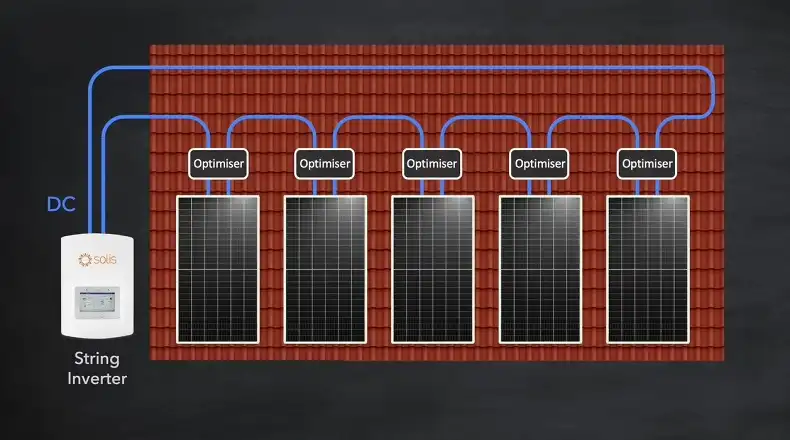
Definition And Purpose
A solar panel optimizer is a small electronic device that’s attached to each individual solar panel in your system.
Its primary purpose is to maximize the power output of that specific panel, regardless of how other panels in the system are performing.
How Optimizers Work
Solar panel optimizers work by using a technology called Maximum Power Point Tracking (MPPT). Every solar panel has a “sweet spot” or maximum power point where it generates the most electricity.
This point can vary throughout the day due to factors like temperature, shading, and the amount of sunlight hitting the panel.
The optimizer constantly adjusts the voltage and current of its assigned panel to keep it operating at this maximum power point.
This means that even if one panel is partially shaded or not performing optimally, it won’t negatively impact the other panels in the system.
Moreover, optimizers allow each panel to operate independently. In a traditional setup without optimizers, panels are typically wired in series, meaning they all produce the same current.
The panel producing the least current limits the entire string. With optimizers, each panel can produce its maximum possible output, regardless of what other panels are doing.
This individualized approach to panel management can lead to increased overall system efficiency, especially in situations where panels might be affected by shading or other performance-limiting factors.
Types Of Solar Panel Optimizers
When it comes to solar panel optimizers, there are a few different types to consider. Each type has its own unique features and benefits. Let’s explore the main options:
DC Optimizers
DC optimizers are the most common type of solar panel optimizers. These devices are attached to the back of each solar panel and work to optimize the DC (Direct Current) electricity produced by the panel before it’s sent to the inverter.
Key features of DC optimizers:
- They’re typically less expensive than other types of optimizers
- They allow for panel-level monitoring of your system
- They can increase system efficiency, especially in partial shading conditions
DC optimizers are a popular choice for many residential solar installations due to their balance of performance and cost.
Smart Solar Panels
Smart solar panels are a newer innovation in the solar industry. These panels have optimizers built directly into them during manufacturing.
Advantages of smart solar panels:
- No need for separate optimizer installation
- Streamlined appearance as there are no additional components visible
- Often come with advanced monitoring capabilities
While smart solar panels can be more expensive upfront, they offer a sleek, integrated solution for those who want the benefits of optimization without additional hardware.
Micro-Inverters As An Alternative
While not technically optimizers, micro-inverters are often considered as an alternative solution.
Unlike traditional string inverters that convert DC to AC electricity for an entire array, micro-inverters perform this conversion at each individual panel.
Benefits Of Micro-Inverters:
- They offer panel-level optimization similar to DC optimizers
- They convert DC to AC electricity right at the panel, which can be more efficient
- They allow for easy system expansion in the future
However, it’s worth noting that micro-inverters are typically more expensive than other optimizer options and may require more maintenance over time.
Benefits Of Solar Panel Optimizers
Solar panel optimizers offer several advantages that can enhance the performance and functionality of your solar energy system. Let’s explore these benefits in detail:
Increased Efficiency
One of the primary benefits of solar panel optimizers is their ability to increase the overall efficiency of your solar array. By allowing each panel to operate at its maximum power point independently, optimizers can help you squeeze out every possible watt from your system.
This is particularly beneficial in situations where:
- Some panels might be slightly mismatched in terms of performance
- Panels degrade at different rates over time
- There are minor manufacturing differences between panels
In these scenarios, optimizers can help ensure that each panel is contributing its maximum potential to your system’s output.
Overcoming Shading Issues
Shading is one of the biggest challenges in solar panel performance. Even partial shading on one panel can significantly reduce the output of an entire string in a traditional setup. Optimizers help mitigate this issue by allowing each panel to operate independently.
This means that if one panel is shaded by a chimney, tree branch, or other obstruction, it won’t drag down the performance of the other panels in the system. This can be especially valuable for installations where some level of shading is unavoidable.
Enhanced Monitoring Capabilities
Many optimizer systems come with advanced monitoring capabilities that allow you to track the performance of each individual panel in your array. This level of detail can be extremely useful for:
- Identifying underperforming panels quickly
- Diagnosing issues in your system
- Understanding how different factors affect your energy production
This granular data can help you maintain your system more effectively and make informed decisions about future upgrades or modifications.
Safety Features
Some optimizer systems, particularly those from brands like SolarEdge, offer additional safety features. These can include:
- Rapid shutdown capabilities, which can quickly de-energize your system in case of emergency
- Module-level shutdown, allowing you to isolate individual panels if needed
These safety features can be particularly important for firefighters and other first responders who may need to access your roof in an emergency situation.
Drawbacks Of Solar Panel Optimizers
While solar panel optimizers offer numerous benefits, they also come with some potential drawbacks that should be carefully considered. Let’s examine these in detail:
Additional Cost
One of the most significant drawbacks of solar panel optimizers is the additional upfront cost they add to your solar installation.
Depending on the type of optimizer and the size of your system, this could add several thousand dollars to your initial investment.
For example, a typical residential system might require 10-14 optimizers, each costing around £40-£50. This could add £400-£700 to your system cost, not including installation.
For smart solar panels with built-in optimizers, the cost increase could be even more substantial.
It’s important to weigh this additional cost against the potential energy production gains and other benefits to determine if it’s a worthwhile investment for your specific situation.
Potential Maintenance Issues
Adding optimizers to your system means introducing more components that could potentially fail or require maintenance over time. While optimizers are generally reliable, they are electronic devices that can be subject to wear and tear.
Consider the following:
- If an optimizer fails, it might need to be replaced, which could involve removing and reinstalling the solar panel
- In systems with many optimizers, the likelihood of at least one failing over the system’s lifetime increases
- Warranty coverage and terms for optimizers should be carefully reviewed
These potential maintenance issues should be factored into your long-term cost calculations when deciding whether to include optimizers in your system.
Complexity Of Installation
Installing a system with optimizers can be more complex than a traditional string inverter setup. This is because:
- Each panel needs to have an optimizer attached and wired correctly
- The installation process can take longer, potentially increasing labor costs
- More wiring is involved, which could increase the risk of installation errors
Additionally, if you’re retrofitting optimizers to an existing system, the process can be even more complex and potentially disruptive.
When Are Optimizers Necessary?
The necessity of solar panel optimizers largely depends on the specific circumstances of your solar installation.
In some cases, they can significantly improve system performance, while in others, they may offer minimal benefits. Let’s explore the key factors that determine when optimizers are most likely to be necessary or beneficial:
Shading Considerations
Shading is one of the primary reasons to consider using optimizers. If your roof experiences any of the following shading conditions, optimizers could be particularly beneficial:
- Partial shading from nearby trees, chimneys, or other structures
- Shading that changes throughout the day as the sun moves
- Seasonal shading variations due to changes in the sun’s path
In these scenarios, optimizers can help mitigate the impact of shading on your overall system performance by allowing unshaded panels to operate at full capacity.
Panel Orientation And Azimuth
If your solar panels need to be installed across multiple roof faces with different orientations or azimuths, optimizers can be very useful. For example:
- Panels on east and west-facing roof sections
- Some panels on the main roof and others on dormers or extensions
- Panels that need to be installed at different tilt angles
In these cases, optimizers allow each panel to perform optimally regardless of its specific orientation or tilt.
System Size And Layout
The size and layout of your solar system can also influence the need for optimizers:
- Larger systems may benefit more from optimizers due to the increased likelihood of panel mismatch or partial shading
- Complex roof layouts that require unconventional panel arrangements might necessitate optimizers for optimal performance
However, for smaller systems on simple, unshaded roofs, the benefits of optimizers may be less pronounced.
Cost Considerations
When deciding whether to include optimizers in your solar panel system, it’s crucial to carefully consider the cost implications. Let’s break down the financial aspects to help you make an informed decision:
Upfront Costs Vs Long-Term Benefits
The initial cost of adding optimizers to your solar system can be significant. As mentioned earlier, each optimizer can cost around £40-£50, which can add up quickly depending on the size of your system.
For a typical residential installation with 10-14 panels, this could mean an additional £400-£700 in hardware costs alone, not including installation labor.
However, it’s important to weigh these upfront costs against the potential long-term benefits:
Increased energy production: Optimizers can help your system produce more energy over time, especially if you have partial shading or complex roof orientations.
Potential for quicker return on investment: If optimizers significantly boost your system’s output, you might recoup the additional cost faster through energy savings.
Extended system lifespan: By reducing stress on individual panels, optimizers might help your system last longer.
Comparing Optimizer Costs To Additional Panels
An interesting point to consider is whether the money spent on optimizers could be better invested in additional solar panels. For example:
If optimizers would cost you an extra £700, could that money buy you an extra solar panel instead?
Would an additional panel potentially produce more energy than the gain from optimizers on your existing panels?
This comparison can be particularly relevant if you have ample unshaded roof space available for expansion.
Additional factors to consider:
Energy prices: In areas with higher electricity rates, the energy production gains from optimizers might be more valuable.
Available incentives: Check if there are any local or national incentives that might offset the cost of optimizers.
Monitoring value: Consider whether the panel-level monitoring provided by many optimizer systems is worth the additional cost to you.
Future-proofing: Optimizers can make it easier to expand your system in the future or adapt to changing shade conditions.
Alternatives To Optimizers
While solar panel optimizers can be beneficial in many situations, they’re not the only solution for maximizing your solar system’s performance. Let’s explore some alternatives that might be suitable for your installation:
Traditional String Inverter Systems
For many solar installations, especially those with minimal shading and uniform panel orientation, a traditional string inverter system can be a cost-effective and efficient choice.
Advantages of string inverter systems:
- Lower upfront costs compared to systems with optimizers
- Simpler installation process
- Fewer components that could potentially fail over time
However, string inverters do have limitations, particularly when it comes to dealing with shading or panel mismatch issues.
Rapid Shutdown Systems
In some regions, rapid shutdown capabilities are required for solar installations. While many optimiser systems include this feature, there are also standalone rapid shutdown devices available.
Benefits of separate rapid shutdown systems:
- Comply with safety regulations without the need for full optimization
- Generally less expensive than full optimizer systems
- Can be added to existing string inverter setups
These systems focus primarily on safety rather than performance optimization, so they may be a good choice if rapid shutdown is your main concern.
Smart Inverter Technologies
Some modern string inverters come with advanced technologies that can help mitigate some of the issues that optimizers address:
Multiple MPP trackers: Allow different strings of panels to operate independently
Shade-tolerant algorithms: Help minimise the impact of partial shading on system performance
Careful System Design
Sometimes, the need for optimizers can be reduced or eliminated through careful system design:
- Strategic panel placement to minimize shading
- Using panels with built-in bypass diodes to mitigate minor shading issues
- Grouping panels with similar orientation and shading profiles on the same string
A well-designed system can often achieve good performance without the need for additional optimization hardware.
Factors To Consider When Deciding On Optimizers
Choosing whether to include optimizers in your solar panel system is a decision that requires careful consideration of various factors. Let’s summarize the key points to keep in mind:
Roof Conditions and Shading
The configuration of your roof, including its orientation, tilt, and the presence of obstructions like chimneys or trees, can significantly impact solar panel performance.
Optimizers can mitigate the effects of shading by allowing individual panels to operate independently. However, if your roof is uniformly exposed to sunlight, the added cost of optimizers might not be justified.
Budget Constraints
Optimizers can enhance system performance but also increase upfront costs. It’s essential to weigh the potential long-term energy savings and increased system efficiency against your budget.
If maximizing energy production is a top priority and your budget allows, optimizers can be a worthwhile investment. However, if cost is a primary concern, you might consider other options to boost system performance.
Monitoring Preferences
Optimizers often come with advanced monitoring capabilities that provide detailed insights into your solar system’s performance.
If you value granular data and the ability to identify and troubleshoot issues promptly, optimizers can be beneficial. However, if basic monitoring is sufficient for your needs, you might opt for a simpler system without optimizers.
System Size and Complexity
For larger or more complex solar systems with multiple roof orientations or varying shading conditions, optimizers can be particularly advantageous.
They can help maximize energy production by optimizing the performance of individual panels, even in challenging conditions. However, for smaller, simpler systems with minimal shading, the benefits of optimizers might be less pronounced.
Desired Energy Output
If maximizing energy production is your primary goal, optimizers can be a valuable tool. By optimizing the performance of each panel, they can help increase overall system output. However, if your energy needs are modest, the additional cost of optimizers might not be justified.
Final Words
Deciding whether to invest in solar panel optimizers is a complex decision that requires careful consideration of several factors.
While they offer the potential for increased energy production and advanced monitoring, their higher upfront cost may not be justified for all systems.
By thoroughly evaluating your roof conditions, budget, monitoring preferences, system size, and desired energy output, you can determine if the benefits of optimizers outweigh the additional expense.
Ultimately, consulting with a qualified solar installer can provide valuable insights and help you make an informed choice that aligns with your specific needs and goals.

